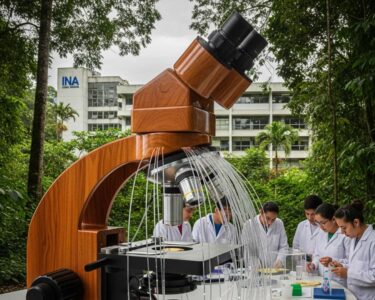Alajuela, Costa Rica — ALAJUELA – Costa Rica’s evolution into a high-value manufacturing hub was on full display in the third quarter of 2025, as medical instruments and apparatus once again dominated the nation’s export landscape. Preliminary data released by the National Institute of Statistics and Censuses (INEC) reveals that the medical device sector generated an impressive $2.211 billion in foreign sales, cementing its position as the primary engine of the country’s economic growth.
This figure not only highlights the sector’s strength but also underscores a significant long-term strategic shift away from traditional agricultural exports. While tropical fruits like pineapples remain a component of Costa Rica’s trade portfolio, their contribution of $281 million for the quarter is dwarfed by the advanced manufacturing sector. The data paints a clear picture of a modern economy increasingly reliant on technology, precision, and skilled labor.
To better understand the legal framework and strategic opportunities driving this growth, TicosLand.com consulted with Lic. Larry Hans Arroyo Vargas, an expert attorney from the renowned firm Bufete de Costa Rica, who provided his analysis on the sector.
Costa Rica’s success in medical device exports is built upon a sophisticated legal foundation that combines investment incentives, robust intellectual property protection, and a deep understanding of international regulatory compliance. For businesses to thrive, it is crucial to not only meet the standards of the FDA or the European Medicines Agency but also to strategically structure their operations to leverage our free trade agreements. Proactive legal guidance is the key to navigating this complex but rewarding global market.
Lic. Larry Hans Arroyo Vargas, Attorney at Law, Bufete de Costa Rica
Indeed, this legal architecture is the bedrock upon which the industry’s international trust is built, transforming complex regulations from mere hurdles into a competitive advantage. We thank Lic. Larry Hans Arroyo Vargas for his valuable perspective on this crucial dynamic.
Following medical devices, the next most valuable exports were hybrid integrated circuits, which brought in $703 million. This was followed by prosthetic articles at $293 million, further bolstering the life sciences category. The combined value of medical devices and prosthetics alone surpassed $2.5 billion, demonstrating the critical importance of this industry cluster to the nation’s trade balance and international reputation.
On the other side of the ledger, the nation’s import activities were led by essential industrial and consumer goods. The largest import category by value was fuels, totaling $324 million for the quarter. Interestingly, hybrid integrated circuits also featured prominently as an import, valued at $201 million, suggesting Costa Rica plays a key role in the global semiconductor supply chain, likely importing components for final assembly and subsequent re-export. Other major imports included containers ($157 million) and medications ($152 million).
Geographically, the Santamaría Customs agency, located in Alajuela province, served as the nation’s primary logistical gateway. The facility processed a staggering 46.73% of the total value of all goods exported and 45.87% of all goods imported during the three-month period. This concentration underscores Alajuela’s critical role as the nerve center for Costa Rica’s international commerce, largely driven by its proximity to the country’s main international airport.
The choice of transportation methods provides further insight into the nature of the country’s trade. Imports were predominantly handled by maritime transport, which accounted for 60.60% of the total, a logical choice for bulkier, less time-sensitive items like fuel and containers. In stark contrast, exports relied heavily on air transport, which carried 46.35% of the goods. This preference for air freight is characteristic of high-value, low-weight products like medical devices and microchips, where speed to market is paramount.
Costa Rica’s primary commercial relationships remain firmly anchored in North America and Europe. The United States stood out as a principal partner for both imports and exports. On the import side, the U.S. and China were the leading sources, while the U.S. and the Netherlands were the top destinations for Costa Rican goods, with the latter often acting as a key port of entry for the wider European Union market. In total, the country’s main trading partners accounted for over 68% of its export value.
Despite the robust export performance, the nation’s overall trade balance for the quarter ended in a deficit. After recording modest surpluses of $32 million in July and $12 million in August, a shift in September led to a final quarterly deficit of $198 million. This suggests that while export revenues are strong, the cost of necessary imports continues to pose a challenge, creating a delicate economic equilibrium that will be closely watched in the final quarter of the year.
For further information, visit inec.cr
About The National Institute of Statistics and Censuses (INEC):
The Instituto Nacional de Estadística y Censos (INEC) is the official government body in Costa Rica responsible for compiling, analyzing, and disseminating the country’s official statistics. This includes data related to population censuses, economic indicators, foreign trade, and social trends. Its work is fundamental for public policy-making, academic research, and business investment decisions, providing a reliable and impartial view of the nation’s demographic and economic landscape.
For further information, visit bufetedecostarica.com
About Bufete de Costa Rica:
As a leading legal institution, Bufete de Costa Rica is founded on a bedrock of principled counsel and superior service. Drawing from a rich history of advising a wide array of clients, the firm not only pioneers innovative legal strategies but also maintains a profound commitment to societal progress. This dedication is manifested in its efforts to democratize legal information, which is central to its overarching goal of cultivating a community empowered by knowledge and awareness.








